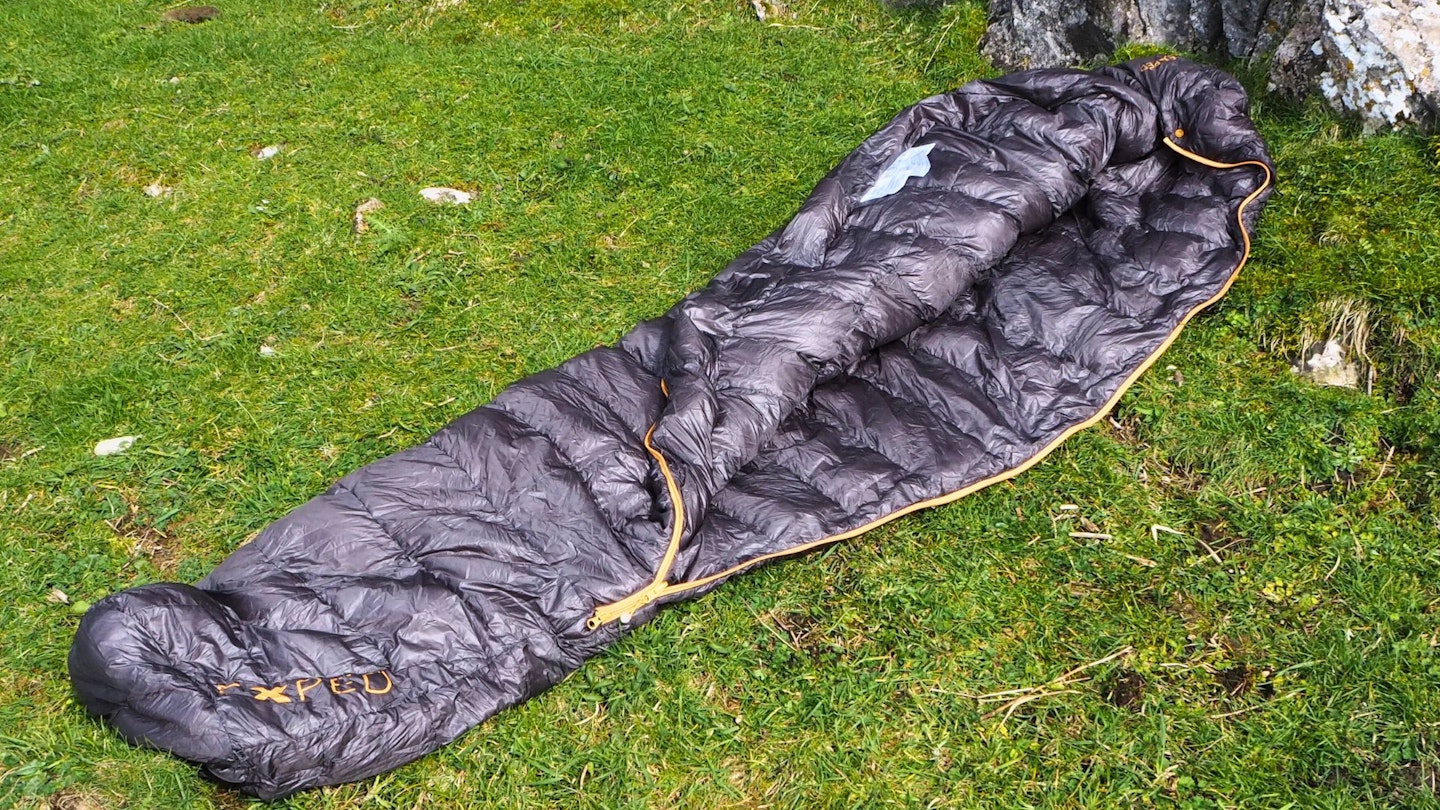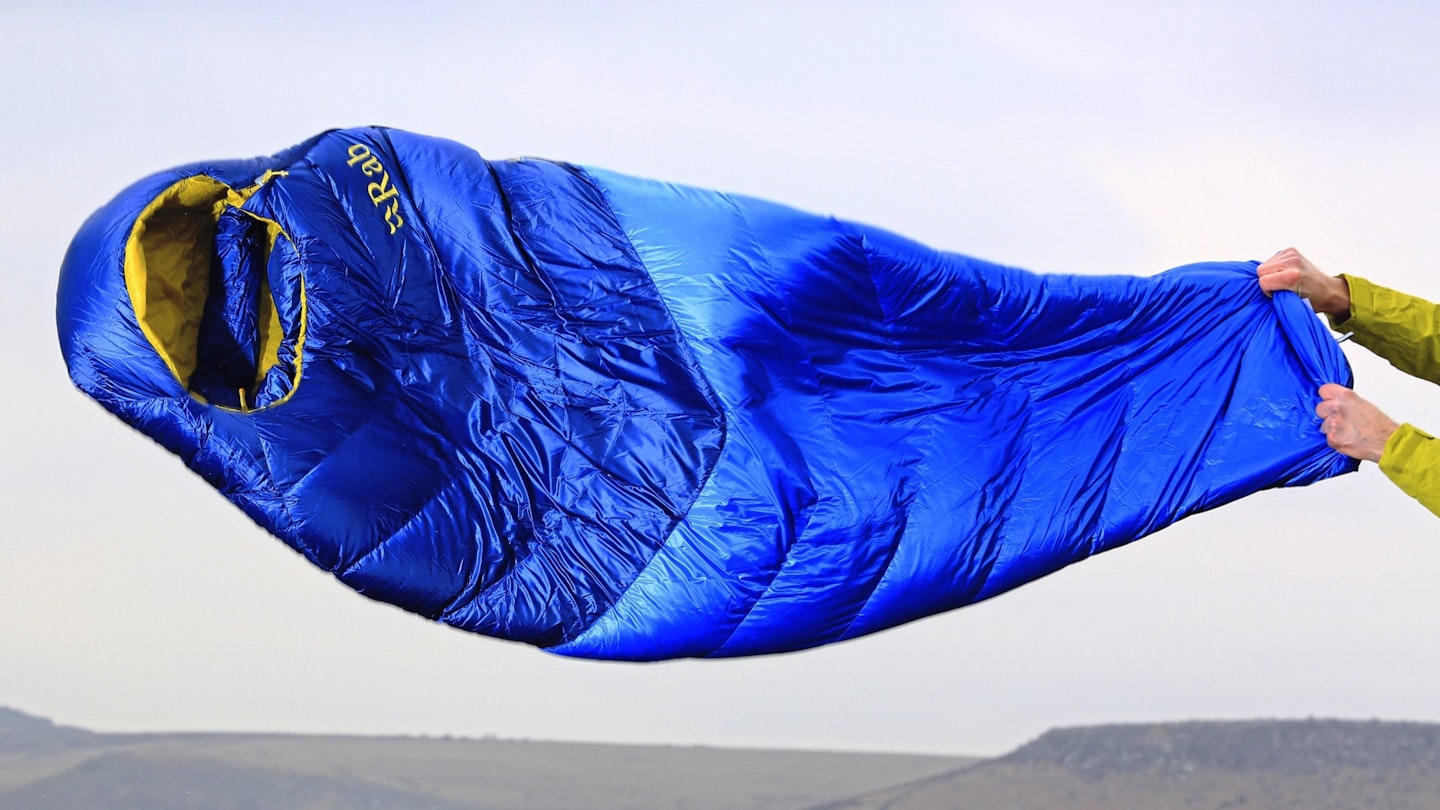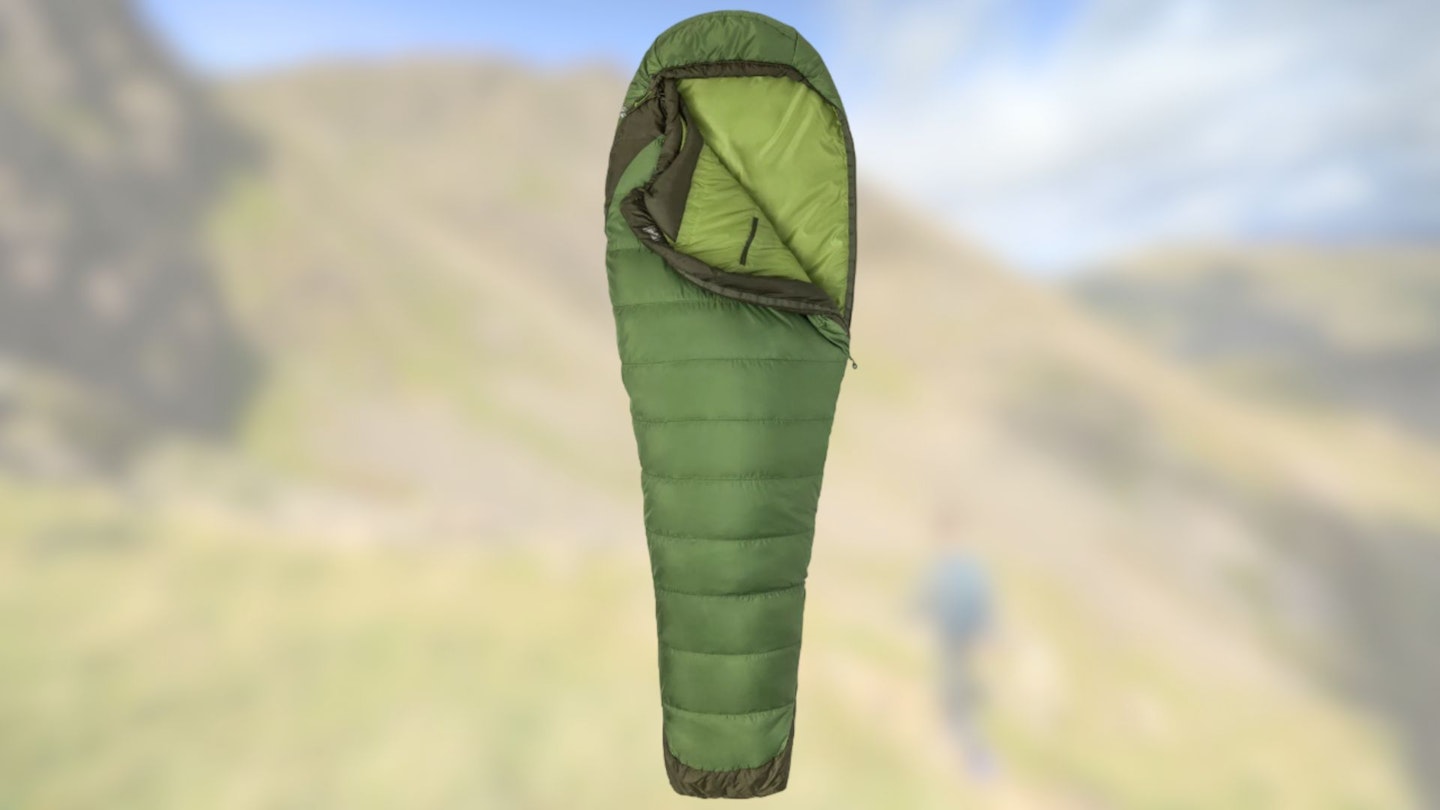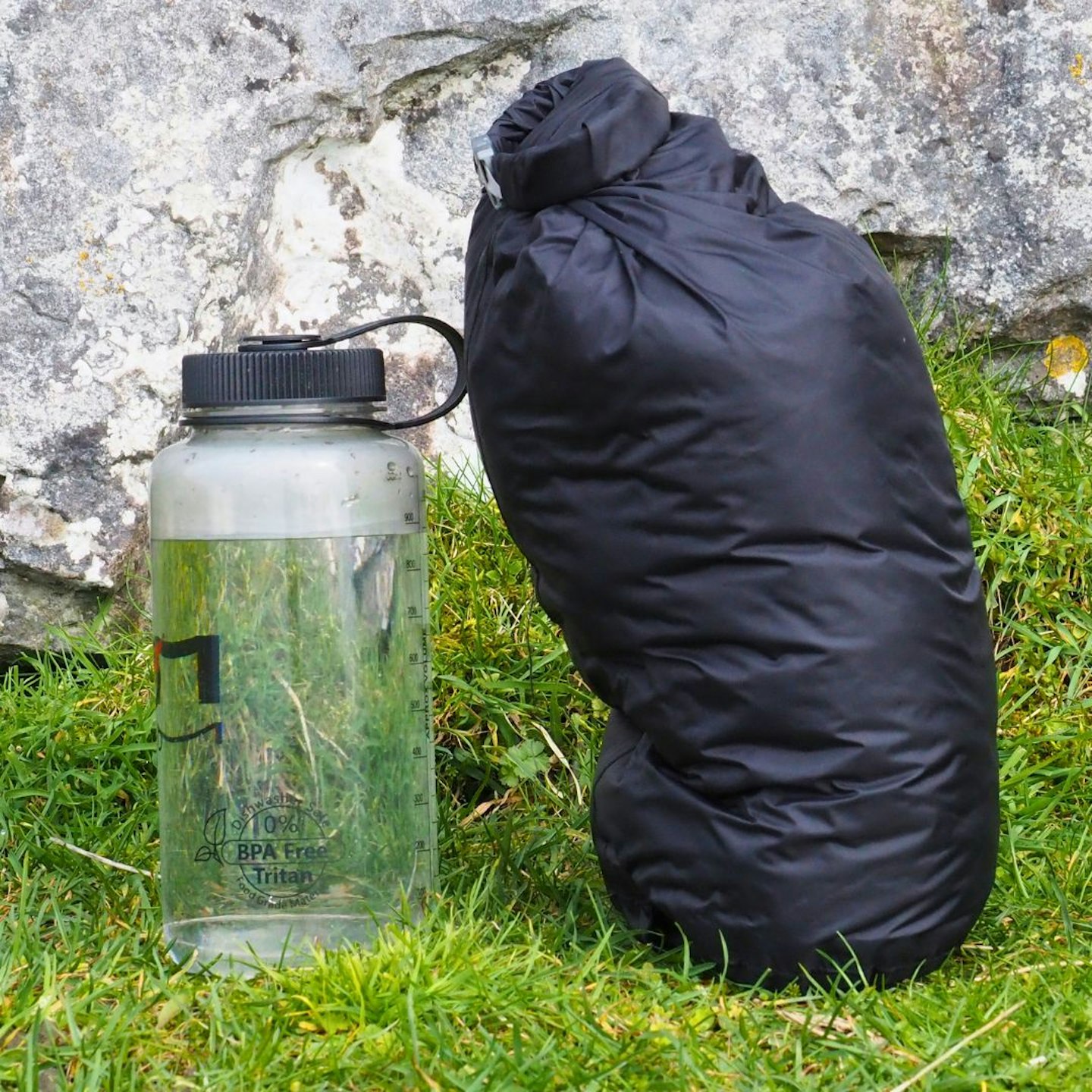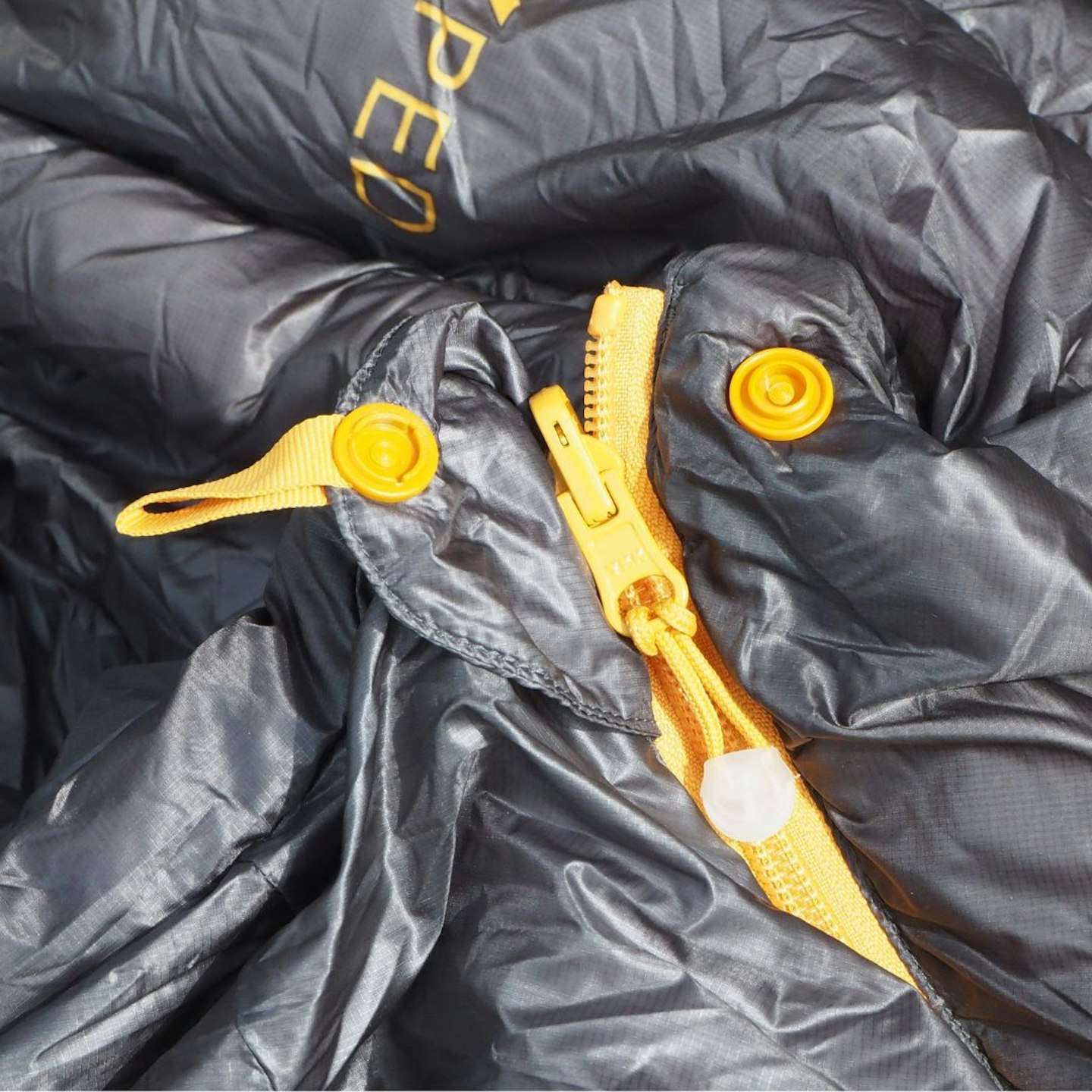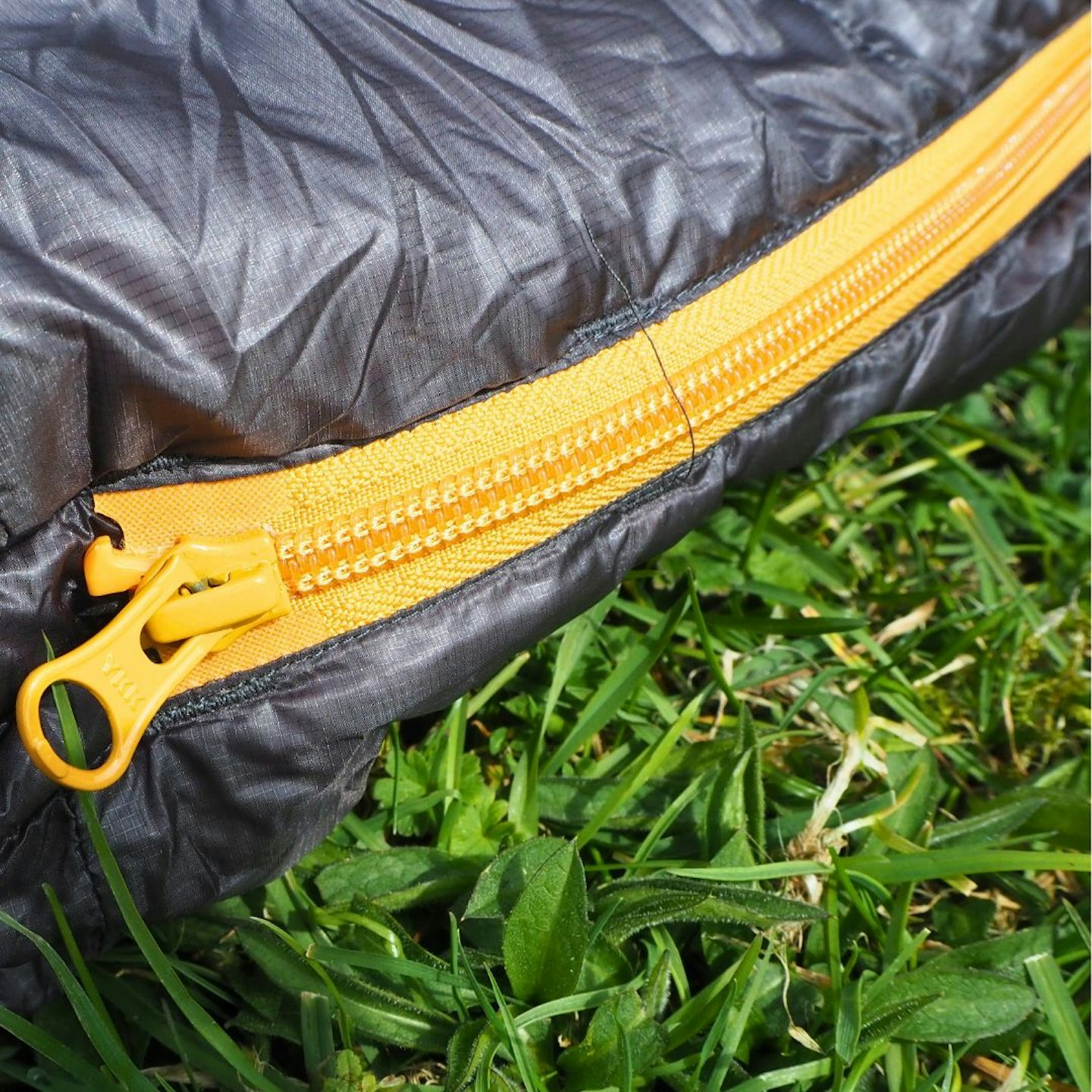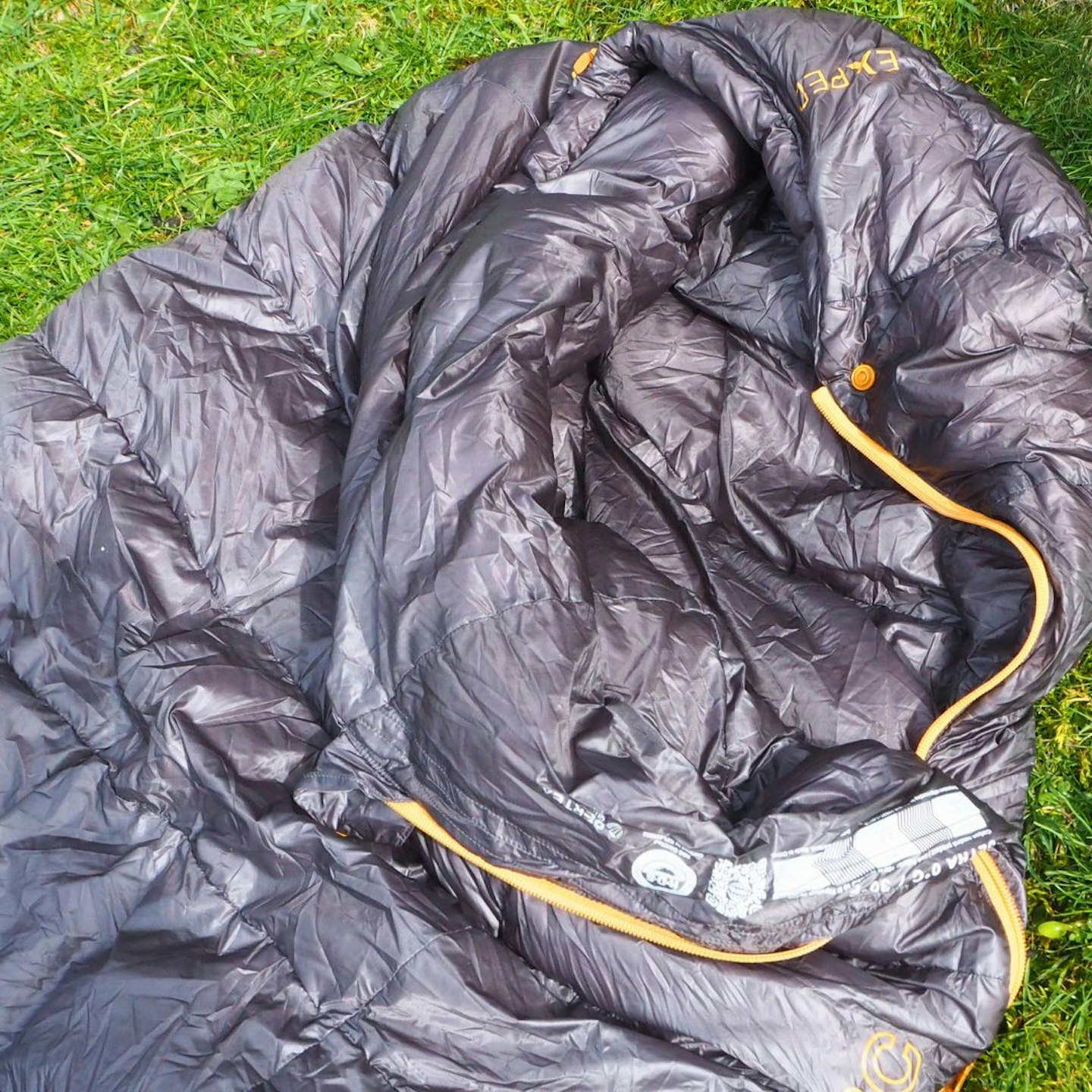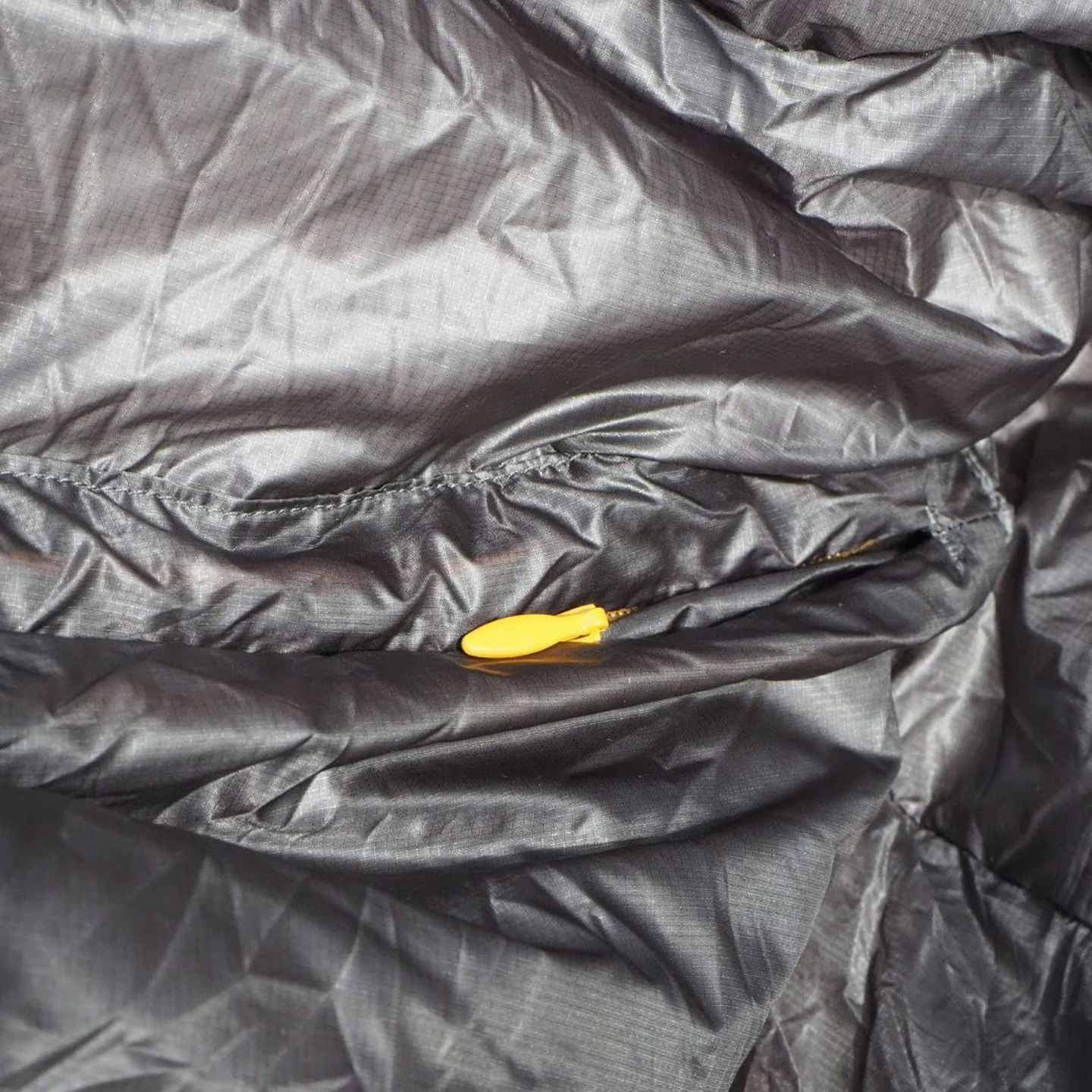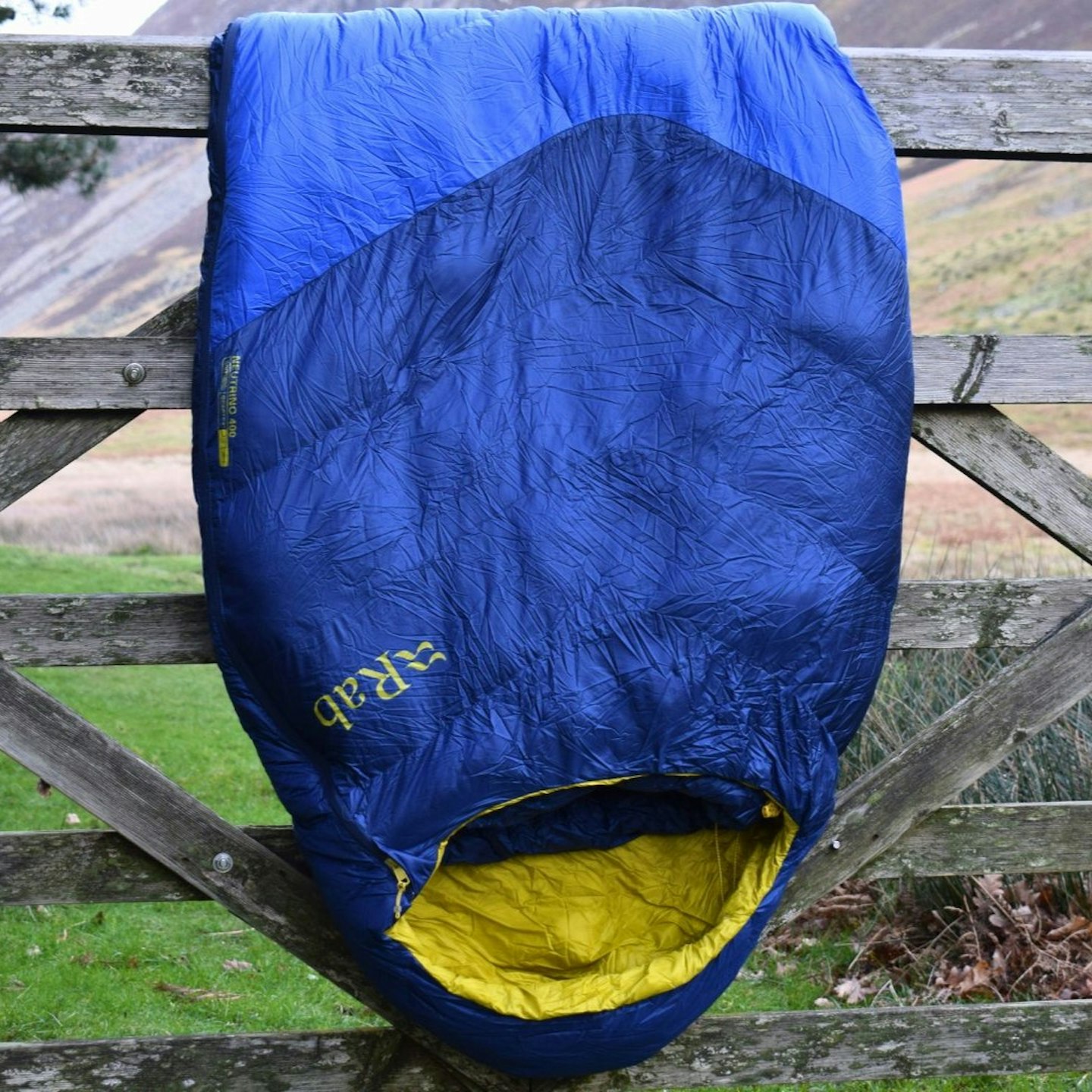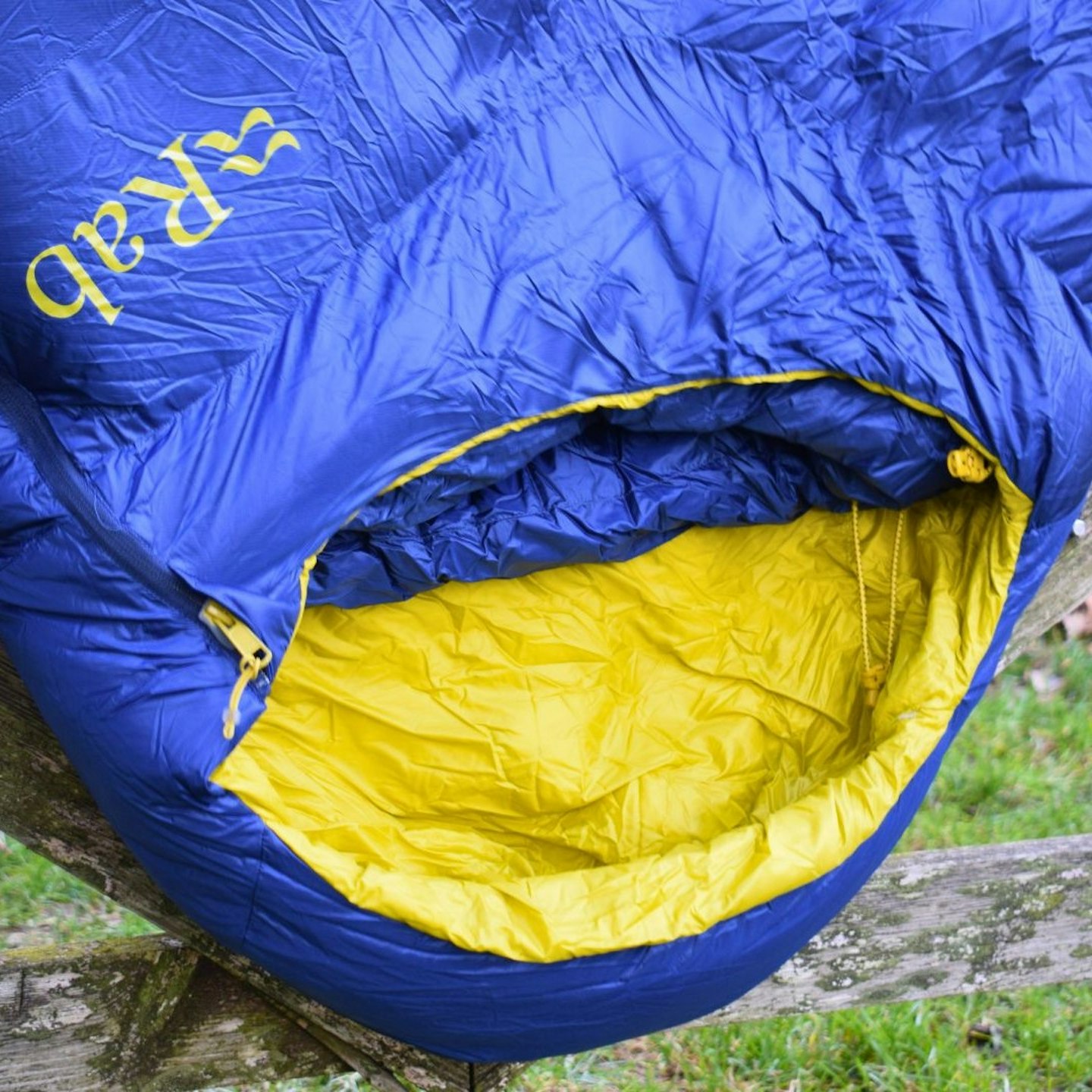Whatever time of year and wherever you're heading for a camp, you'll need a guide to the best sleeping bags. Picking your perfect sleeping bag is no quick job. It's so easy to get hypnotised by flashy ads and jargon-heavy product descriptions, which is where we come in.
This may come as a surprise, but just like the sleeping mat you rest on, sleeping bags are remarkably varied and often specialise in particular niches. You can kick off the spring/summer season by falling down the rabbit hole of the best 3-season sleeping bags. Then before you know it, you're in search of something wintery.
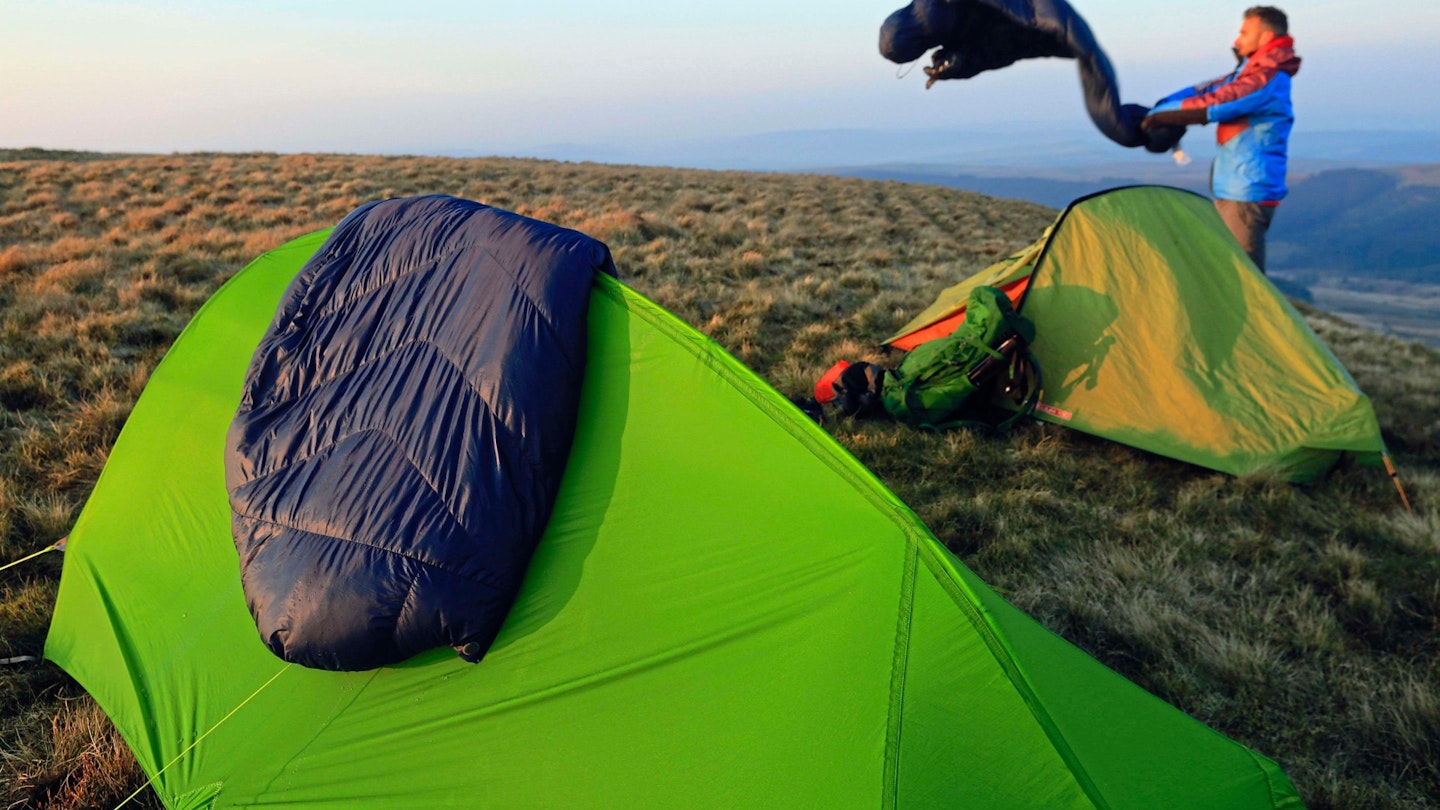
What are the best sleeping bags of 2025?
Best sleeping bag overall: Mountain Equipment Xenith III
Best value sleeping bag: Deuter Orbit 0°
Best lightweight sleeping bag: Exped Ultra 0°
If we're being honest, sleeping bags can reach astronomical prices, and most first-time campers don't need to break the bank. So, here's the list that can cater for everyone year-round. The very best sleeping bags for every season, every adventure, and for every wallet.
How we tested the best sleeping bags
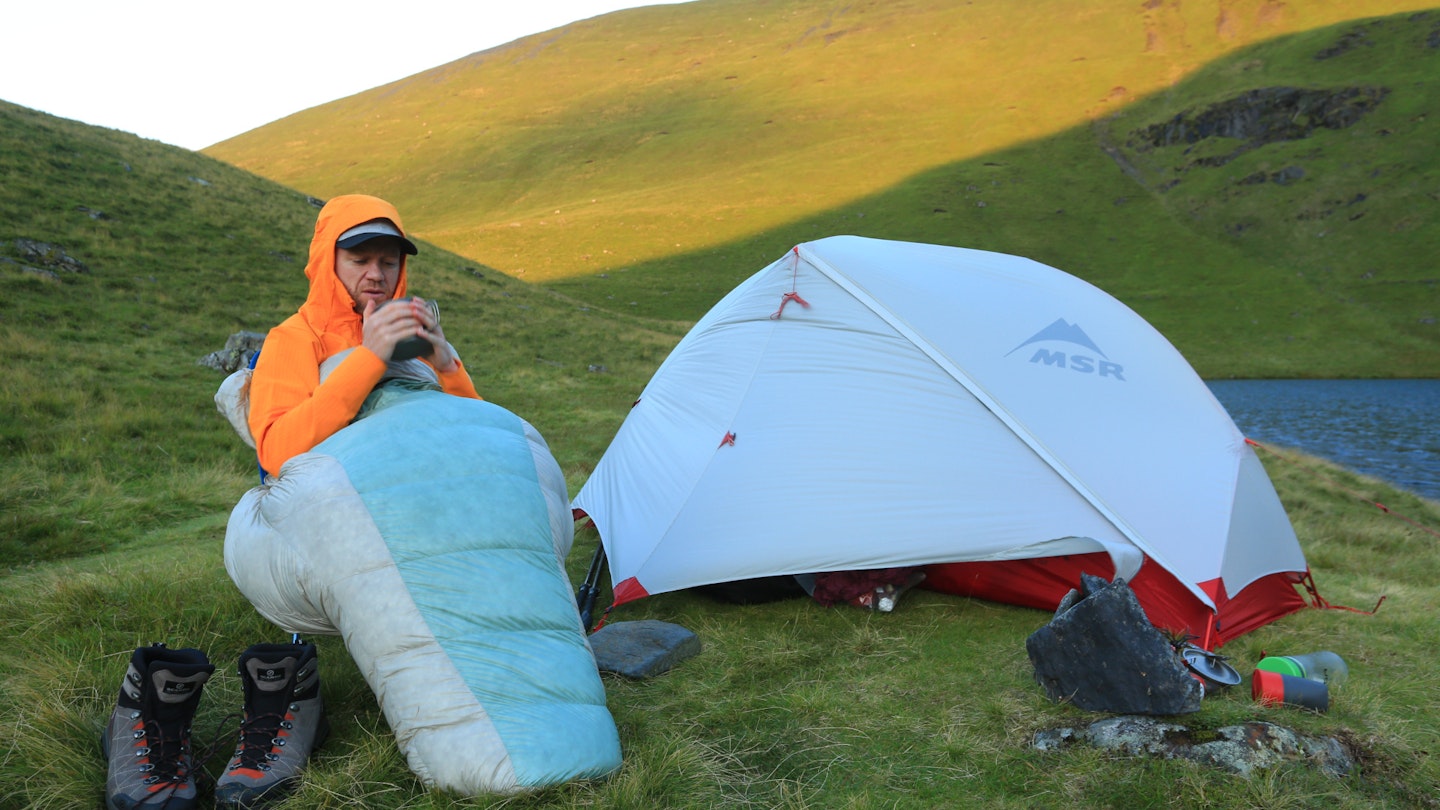
Our sleeping bag testers, Oli Reed, James Forrest and Matt Jones, are all experienced campers, backpackers, and mountaineers who have been with LFTO and Trail for years now.
Oli is Group Editor of LFTO, Trail and Country Walking magazine, as well as a lifelong hiker with over a decade of experience testing outdoor gear.
As an avid hiker, Matt has completed the UK's triple crown of long-distance hikes. James, on the other hand, has climbed all 1,0001 mountains in the UK and Ireland, over a period of two years.
Testing these bags involved plenty of nights out in the hills and mountains – it's time-consuming, but we’re not complaining. Each bag is assessed in the conditions it's designed for: lightweight summer bags are tested in mild conditions, three-season sleeping bags across varied temperatures, and winter bags in proper sub-zero cold.

Beyond warmth, we consider weather resistance. If a sleeping bag claims to perform in damp conditions, we put that to the test – checking water-resistant shell fabrics and how well insulation holds up when exposed to condensation or drizzle. We also assess overall durability, looking at materials, stitching, and zip quality to see how well the bag will stand up to repeated use.
Comfort and practicality are equally important. We examine pack size and weight for backpacking use, as well as roominess – some bags offer a snug, efficient fit, while others prioritise space to move.
Features like draft collars, hood adjustments and zip baffles can make all the difference in warmth and usability. Sustainability is another key factor, with recycled fabrics and ethical down sourcing becoming increasingly common.
Curious as to how we get products in for review? Read about how we test here.
The best sleeping bags reviewed:
When he reviewed a load of three-season sleeping bags in May 2025, gear tester Matt Jones decided that this was the best. It’s ultralight, very cosy and well-designed.
It's the lightest of all of the bags he tested, weighing just 690g/1lb 8oz in the regular size. It compresses to 25x16cm in its bag, which outperforms most competitors.
The Xenith III has a very good warmth to weight ratio. It's made with luxury 900-fill power down, plus a superlight 10D Plasma shell fabric – this means it's super cosy, but also very light.
Unlike most three-season bags, you get vertical chest baffles and slanted main body baffles, which maximise heat retention.
It offers superior comfort compared to most ultralight options. Features include a full-length zip, a multi-panel footbox and hood, and an integrated draught collar. The mummy-style design provides a snug fit without feeling restrictive.
With EN/ISO temperature ratings of -2°C (comfort) and -8°C (limit), the Xenith III is a standout choice for UK hill and mountain use from early spring to late autumn. The only drawback is it's high cost, but Matt reckons it's worth it.
Read our Mountain Equipment Xenith III review here.
Pros
- Premium 900 fill power down
- Superb warmth for weight
- Light and packable
- Draught collar and hood drawcord
- Full-length zipper
- Two lengths available
Cons
- Expensive
- Down fill is not hydrophobic
| RRP: | £550 / $679.95 |
| Sizes: | Regular, long |
| Packed size: | 25x16cm |
| Weight: | 690g / 1lb 8oz (reg) |
| Insulation: | 373g of 900 fill power 90/10 European goose down |
| Materials: | 10D Plasma ripstop nylon fabric (PFAS-free DWR) |
| Temperature rating: | Comfort -2°C, limit -8°C |
We'll state the con of this sleeping bag straight away: at 1,450g and packing away into a 46 x 24cm package (long size), this isn't a compact sleeping bag. But everything else about it is fantastic. It's comfortable, warm, durable, and sustainable.
The Orbit 0° is made from a 50D recycled polyester shell and 75D microfibre lining, with Hollowfibre synthetic insulation. Not only are these materials tough, but they're also much softer and nicer to touch than the slippery, shiny feel you often get.
Its Hollowfibre synthetic insulation means the Orbit 0° gives down sleeping bags a hiding on price but is also effective at insulating in damp conditions. There are other features to help improve insulation too, such as a draft collar, adjustable hood, and efficient mummy shape. The Orbit 0° is compatible with zip coupling too.
There are two lengths available, plus a women's version (suitable for up to 175cm height). Sustainability is very good too. The Orbit 0° is PFC-free and uses a recycled shell fabric. Deuter is also Fair Wear Foundation member with 'Leader' status.
Find the women's version here.
Pros
- Durable
- Soft, snug material
- Sustainable
- Zip coupling
Cons
- Bulky compared to some rivals
| RRP | £105 |
| Packed size | 45 x 23cm (Reg and SL), 46 x 24cm (Long) |
| Weight | 1400g/49.3oz (Reg and SL), 1450g/51.1oz (Long) |
| Insulation | Synthetic High-Loft Hollowfibre |
| Materials | Recycled 50D polyester shell, 75D microfibre polyester lining |
| Temperature rating | Comfort 5°C | Limit 0°C |
| Sizes | Regular (185cm), Long (200cm), SL/women's (175cm) |
It's easy to be fooled by this lightweight sleeping bag that appears to be filled with not very much insulation. Such is the deceptive beauty of high-quality down.
The Ultra 0° uses high loft 850-fill goose down, which means you don't need much to get a warm sleeping bag. Thus, 295g of fill (long size) gives the Ultra 0° a temperature rating suitable down to about 2°C. For a 600g (long size) sleeping bag, that's very impressive.
There's another big plus point to the Ultra 0°. While most sleeping bags come in regular and long sizes, the Ultra 0° comes in five sizes: small, medium, wide medium, large, and wide large.
Furthermore, you get a very sustainable sleeping bag here too. Naturally, the down is responsibly sourced, but the Exped Ultra 0° goes further. The Pertex Quantum outer material is recycled, as is the zip. It is a bluesign-approved product and PFC-free; Exped has even offset the manufacturing and shipping emissions.
Downsides to this sleeping bag include the trade-off with the 10D Pertex fabric. Sure, it's super lightweight and has the potential to be long-lasting, but you need to be very careful with it to achieve that. It's a tad delicate. It's also understandable to baulk at the price on initial inspection. However, you do get a lot in return.
Read our full Exped Ultra 0 review.
Pros
- Sustainable
- Super lightweight and compact
- Five sizes available
- Impressive warmth-to-weight ratio
Cons
- No hydrophobic down treatment
| RRP | £445 |
| Packed size | 20 x 15cm (Small), 25 x 15cm (Med), 30 x 17cm (Long and MW), 32 x 17cm (LW) |
| Weight | 510g/17.9oz (Small), 530g/18.7oz (Med), 590g/20.8oz (Long), 660g/23.2oz (MW), 690g/24.3oz (LW) |
| Fill | RDS-certified 850-fill down |
| Materials | Recycled, bluesign-approved 10D nylon Pertex Quantum shell w/ PFC-free DWR, 15D nylon lining |
| Temperature rating | Comfort 7°C | Limit 2°C |
| Sizes | Small (170cm), Medium (180cm), Long (195cm), Medium Wide, Long Wide |
We're big fans of Rab's versatile Neutrino range. With 10 total products sporting various weights and materials, the 400 is a stand-out contender. Rab haven't skipped a single detail; each bag is hand-stuffed and fully-featured, treated with a level of care that has earned the Neutrino 400 a number of top awards from us over the past few years.
Features include an adjustable hood, ¾-length YKK zipper, angled footbox, internal stash pocket, cotton storage sack and waterproof compression sack, amongst others. As well as being packed with nifty features, the Neutrino 400 has a unique baffle design that solidifies its place at the top of this list.
Baffles are the individual pockets of down fill responsible for the bag's insulation. While most bags go for horizontal baffles, the chevron-style arrangement in the Neutrino 400 allows for more loft, fewer cold spots, and uses less overall material.
We're also very pleased to see some newly implemented sustainability upgrades. Rab have used PFC-free DWR treatments as well as increasing the amount of recycled materials in their construction, particularly in the Pertex Quantum shell.
Read our full Rab Neutrino 400 review or find the women's version here.
Pros
- Tried and tested design
- Excellent warmth-to-weight ratio
- Several sizes and versions
- Decent sustainability credentials
Cons
- Narrow mummy shape won't suit everyone
| RRP | £420 / $539.95 |
| Packed size | 35 x 23cm |
| Weight | 775g / 27.3oz |
| Insulation | 400g of 800-fill RDS goose down w/ PFC-free Nikwax hydrophobic treatment |
| Materials | 20D Pertex Quantum recycled nylon w/ PFC-free DWR |
| Temperature rating | Comfort -1°C | Limit -7°C |
| Sizes | Regular, Long, Long Wide, Women's |
The Big Agnes Fly Creek UL 25 is a premium, ultralight three-season sleeping bag.
It offers impressive warmth for its weight. The regular size is just 700g and packs down to a compact 24cm x 20cm, yet it's rated to +2°C comfort.
The Fly Creek has a slim tapered shape, with high-quality 850-power down and diamond quilting. It should be noted that the slim fit may feel restrictive for broader builds.
Unsurprisingly for an ultralight bag, features are minimal. There's a snug hood, ergonomic footbox, draught collar, and a small half zip. The zip is effective but fiddly; the fact it's only goes half the way down limits ventilation.
It's wonderfully sustainable, though. The Fly Creek uses NetPlus fabric made from recycled fishing nets, a PFAS-free DWR, and bluesign-approved, RDS-certified down fill.
While this bag is excellent for ultralight camping, it may not suit those who prioritise comfort or versatility in varied weather conditions. It's competitively priced for a premium bag, but it's certainly not cheap (£450 RRP).
Read our full Big Agnes Fly Creek UL25 review.
Pros
- Very good warmth-to-weight ratio
- Extremely compact and ultralight
- High-quality materials
- Good eco credentials
Cons
- Half zip can snag and limits ventilation
- Tapered fit isn't ideal for broad frames
- Expensive at £450/$589
| RRP: | £449.99 / $499.99 |
| Sizes: | Regular, long |
| Packed size: | 24x20cm |
| Weight: | 700g / 1lb 8.7oz (reg), 779g / 1lb 11.5oz (long) |
| Insulation: | 480g/540g of 850 fill power Downtek hydrophobic goose down (PFC-free) |
| Materials: | 10D NetPlus 100% recycled ripstop nylon fabric (PFAS-free DWR) |
| Temperature rating: | Comfort 2°C | Limit -4°C |
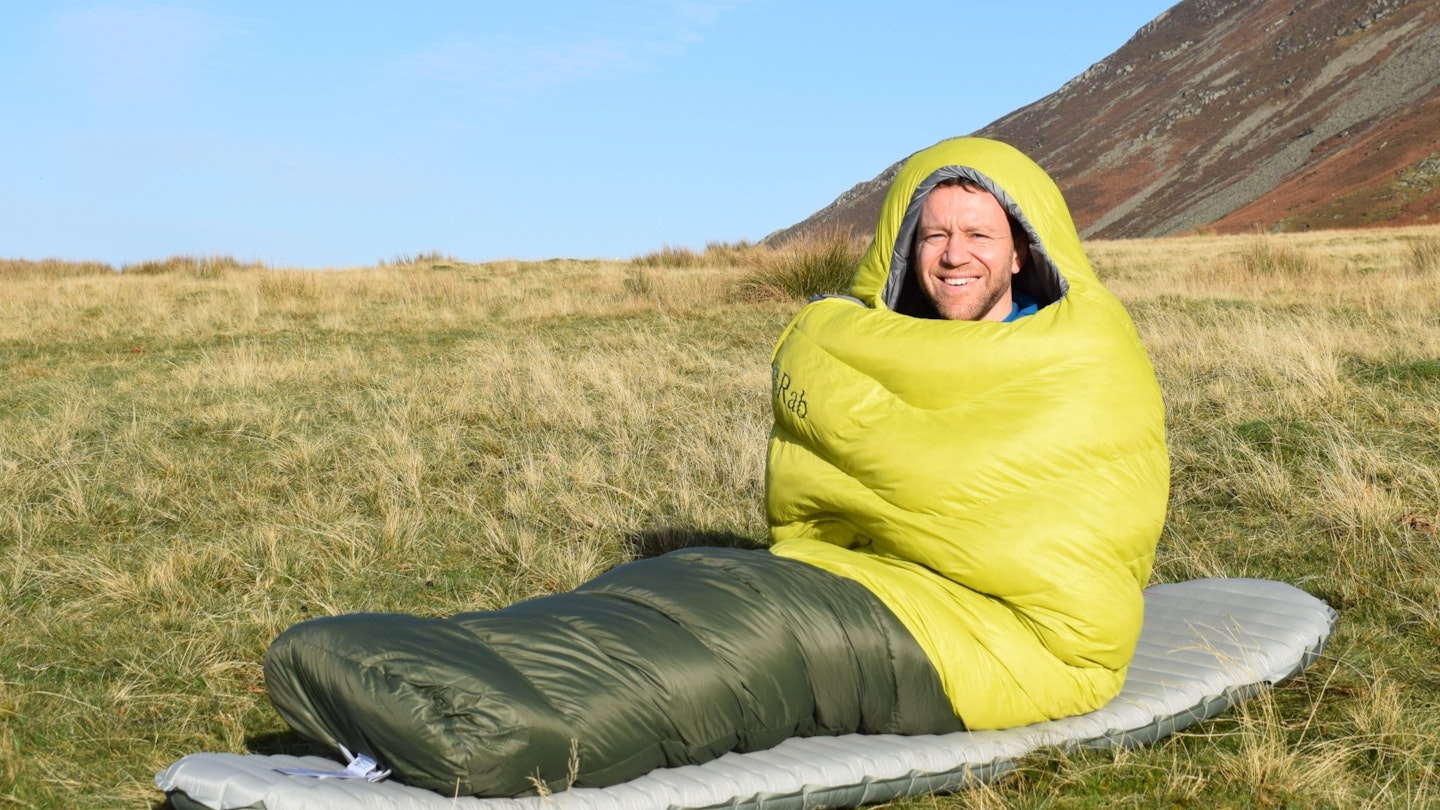 LFTO
LFTOrab.equipment
Rab has pedigree in sleeping bags, which is on display here. There are some great features including YKK zips and an adjustable hood, while there's a weatherproof Pertex Quantum outer shell.
The down insulation has a fill power of 650, which isn't all that high, but it's pretty warm. It comes with a hydrophobic treatment from Nikwax to help protect performance in damp conditions.
Rab has given this sleeping bag a 'sleep limit' of -16°C. We've not tested it down to that temperature, but we can say we'd be comfortable sleeping in this bag in single-digit minus temperatures.
The pack size is pretty compact and a weight of 1,351g is very good, so it competes well with the best winter sleeping bags.
For more info, read our Rab Alpine 800 Down review.
Pros
- Excellent features
- Hydrophobic down
- Solid all-round performance
- Lightweight and compact
Cons
- Down is only 650 fill power
- Not as ‘lofty’ as some other winter options
- Fit may feel a little snug
- No EN/ISO ratings
| RRP | £330 / $365 |
| Temp rating | -16C Rab Sleep Limit (EN/ISO ratings not stated) |
| Weight | 1,351g / 47.5oz (regular) |
| Pack size | 40x25cm |
| Sizes | Regular, long, women’s |
| Fill | 800g of 650 fill power European duck down, with Nikwax hydrophobic coating |
The Mammut Comfort Down -5C is particularly useful for those who sleep on their side. It has a relaxed mummy shape and a distinctive centre zip, enabling excellent ventilation and ease of access.
It comes in two lengths, with a -5°C lower limit for the men’s/L size and -7°C for the shorter women’s/M size. It performs well in terms of warmth to weight and packability, though it can’t compete with higher-spec bags.
It's pretty sustainable, with with 600g of 100% recycled 650 fill power duck down and recycled polyester fabrics, though there's no responsible sourcing certification. There's no hydrophobic treatment, which might make it less durable in the long run.
It's generously-sized, so smaller users might find that there's too much dead space inside – this reduces thermal efficiency. But for Matt on test, it proved to be comfortable and warm.
The Mammut Comfort Down is certainly versatile, thanks to The central zipper, dual drawcord hood, and 'blanket mode'. But Matt finds that it's not as 'premium' as other Mammut models, as there's no internal pocket or noise-reducing hood lining.
Overall, the Mammut Comfort Down -5 is a comfortable and versatile bag with a practical centre zip – we'd say it's a great all-rounder.
Read our Mammut Comfort Down review here.
Pros
- Comfortable
- Practical centre zip design
- Sustainable build
Cons
- Not as thermally efficient as higher FP rivals
- Down is not moisture-resistant
| RRP: | £300 / $249.95 |
| Sizes | Men’s/large (for users from 180-195cm) and women’s/medium (for users up to 180cm) |
| Packed size: | 25x19cm (L), 22x19cm (M) |
| Weight: | 1.19kg / 2lb 10oz (men’s/L), 1.13kg / 2lb 8oz (women's/M) |
| Insulation: | 600g/21oz of 650FP 100% recycled grey duck down |
| Materials: | 100% recycled polyester ripstop with PFC-free DWR |
| Temperature rating: | Comfort 0°C | Limit -5°C (men’s/L), Comfort -1°C | Limit -7°C (women's/M) |
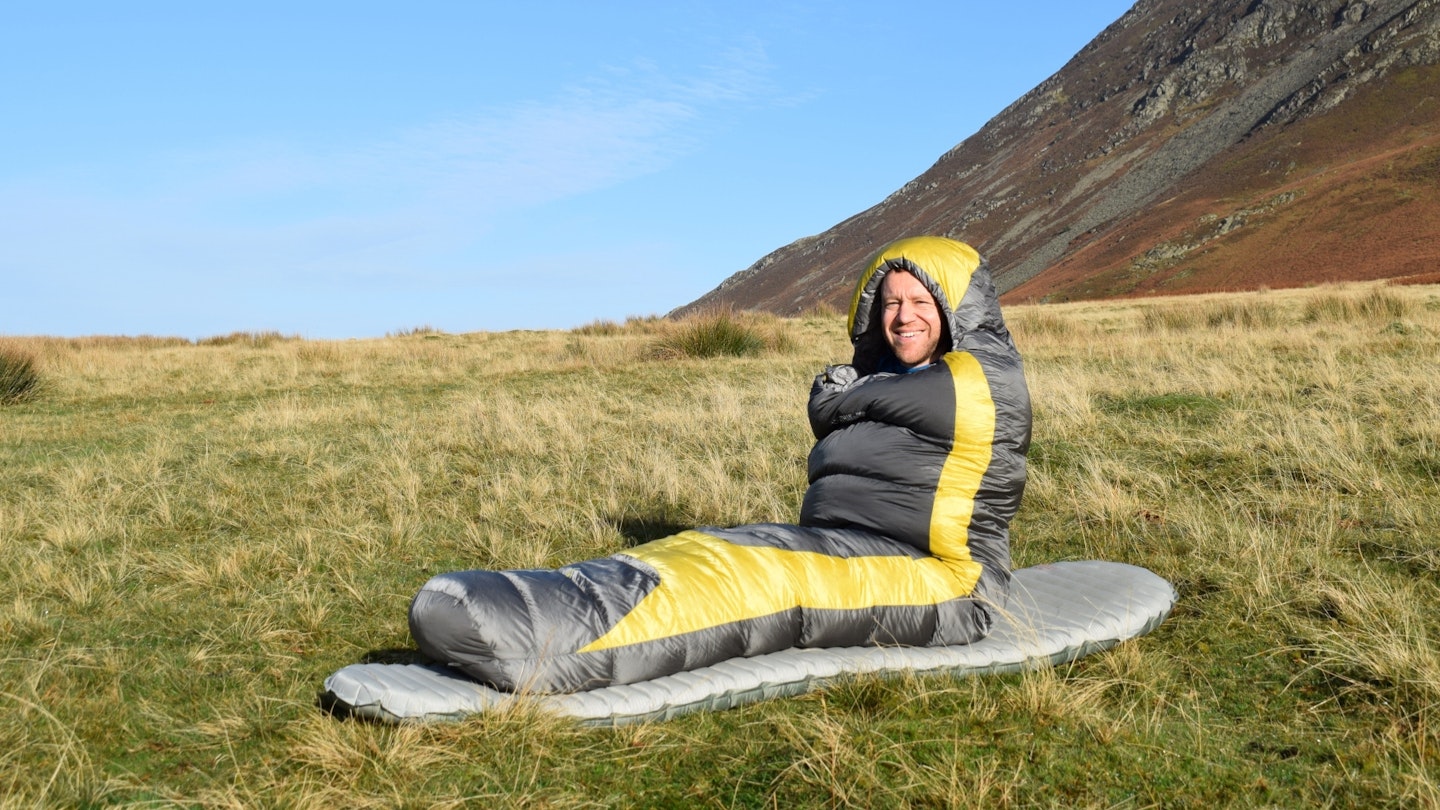 LFTO
LFTOwww.gooutdoors.co.uk
The price is one of the biggest positives with this winter OEX sleeping bag, as you can get it for as low as £169. That's great value for a sleeping bag that has a comfort temperature rating of -9°C and a comfort limit of -16°C. While we're not sure the bag is quite up to those limits, it's certainly good for camping just below zero.
There's 900g of 600 fill power hydrophobic down, which feels about right for this price. You'll find better insulation in some of the other picks here, though.
Features include a decent neck collar baffle and a good hood, while a weight of 1,399g is pretty damn good. It packs down well, too.
The overall build quality was reflective of the price and the sleeping bag doesn't feel quite as premium as other options here.
See our full OEX Leviathan EV 900 Down Sleeping Bag review for more.
Pros
- Great value
- Strong features
- Decent temperature ratings
- Hydrophobic down
Cons
- Only 600 fill power
- Not premium quality
- No female version
| Price | £260 / $290 |
| Temp rating | -9C comfort, -16C comfort limit |
| Weight | 1,399g / 49.3oz |
| Pack size | 33x25cm |
| Sizes | One size only |
| Fill | 900g of 600 fill power grey duck down |
The Marmot Trestles Elite Eco sleep bags have consistently impressed us with their combination of high performance and reasonably sustainabile materials.
The Trestles Elite Eco 30 is our pick of the bunch because it has a temperature rating of around zero, which makes it useful for most scenarios. It's made from fully recycled materials throughout, including the innovative HL-ElixR Eco insulation. For a synthetic sleeping bag it offers an very good warmth-to-weight ratio and maintain insulation even when damp—a hallmark of synthetic materials.
The Trestles Elite Eco 30 is also compact, certainly for a synthtic sleeping bag. It has a full-length main side zip that resists snagging and an additional zip on the opposite side for improved ventilation and ease of access.
Inside the bag, you'll get plenty of space for a hiking sleeping bag, especially in the foot area, setting it apart from traditional mummy-shaped designs. The hood cinches snugly around the head, enhancing comfort during colder nights.
While there are some minor points to consider, such as the main side zip not extending fully to the foot, resulting in warmer feet even when partially open, and the shoulder baffle being slightly less effective compared to some competitors, these are relatively minor concerns rather than significant drawbacks.
Overall, the Marmot Trestles Elite Eco stands out as a top choice for those seeking both performance and eco-conscious design in a synthetic sleep bag.
Pros
- Fully recycled main materials and fill
- Still performs in damp conditions
- Comfortable material
- Impressively low weight for synthetic
Cons
- Could have a better draft collar
- Not the most compressible
| RRP | £170 |
| Packed size | 46 x 22cm |
| Weight | 855g / 30.2oz (regular), 918g / 32.4oz (long), 1140g 40.2oz (long x wide) |
| Insulation | Recycled HL-ElixR Eco synthetic |
| Materials | Recycled polyester shell and lining |
| Temperature rating | Comfort 3°C | Limit -2°C |
| Sizes | Regular, Long, Long X Wide |
We're quite fortunate at Live for the Outdoors to have a primary school-aged tester who's prepared to climb mountains, sleep in strange places, and generally give outdoor kit the thrashing it deserves on a regular basis. We should also point out he doesn't actually work here but is closely related to someone who does.
He graduated to his first 'proper' sleeping bag when he turned 6 years old, and the Snugpak Explorer has been an excellent choice. At 170cm long (he's about 130cm tall), it's nice and roomy with plenty of space to grow into, and the thing we really like is it's manufactured to the same standards as Snugpak's adult sleeping bags.
The Explorer has the same technical insulation and fabrics, including a Supersoft lining and technical Isofibre insulation. Like most sleeping bags you can fully unzip it to use as a duvet, plus you can unzip just the area around your feet to make it into one big airy tunnel.
Available in a range of three colours, including blue and purple, but the camouflage one has gone down very well with our mini reviewer. The price is very fair for what you're getting here too – basically an excellent sleeping bag for camping with kids from spring through summer.
Pros
- Great value for money
- Impressive feature set
- Can also be used as a quilt
Cons
- Not quite thick enough for very cold nights
| RRP | £40 |
| Packed size | 24 x 20cm |
| Weight | 1kg / 35oz |
| Fill | Isofibre, polyester |
| Materials | Polyester |
| Temperature rating | Not stated |
| Sizes | One size (140cm) |
Sleeping bag FAQs
What type of sleeping bag is warmest?
There's a very closely related question to this, which is: 'What sleeping bag shape is the most efficient?' The straightforward answer to both is a mummy-shaped sleeping bag insulated with high loft down. Down offers the best warmth-to-weight ratio for insulating gear and garments. And mummy-shaped sleeping bags have a tapered, more confined fit than a rectangular-shaped sleeping bag and is easier to keep warm. Check out our in-depth guide to sleeping bags for more information.
What is the difference between cheap and expensive sleeping bags?
The key factors that influence price are the type of insulation, sustainability, and whether the sleeping bag is aimed at regular camping or more demanding trekking or hiking. For example, the cheapest type of sleeping bag you'll find is a lightly insulated summer option with synthetic fill aimed at weekend family camping. It doesn't need to be especially light or compact; it probably doesn't have any sustainability credentials to shout about. At the other end of the spectrum, you have the warmest sleeping bags for winter expeditions in the mountains. These use tough fabrics and very high-quality down insulation, both treated to be hydrophobic. If the brand is sustainable, it will have used recycled and PFC-free materials and have high labour standards so that the people who make their gear are paid properly and respected.
What should you look for in a sleeping bag?
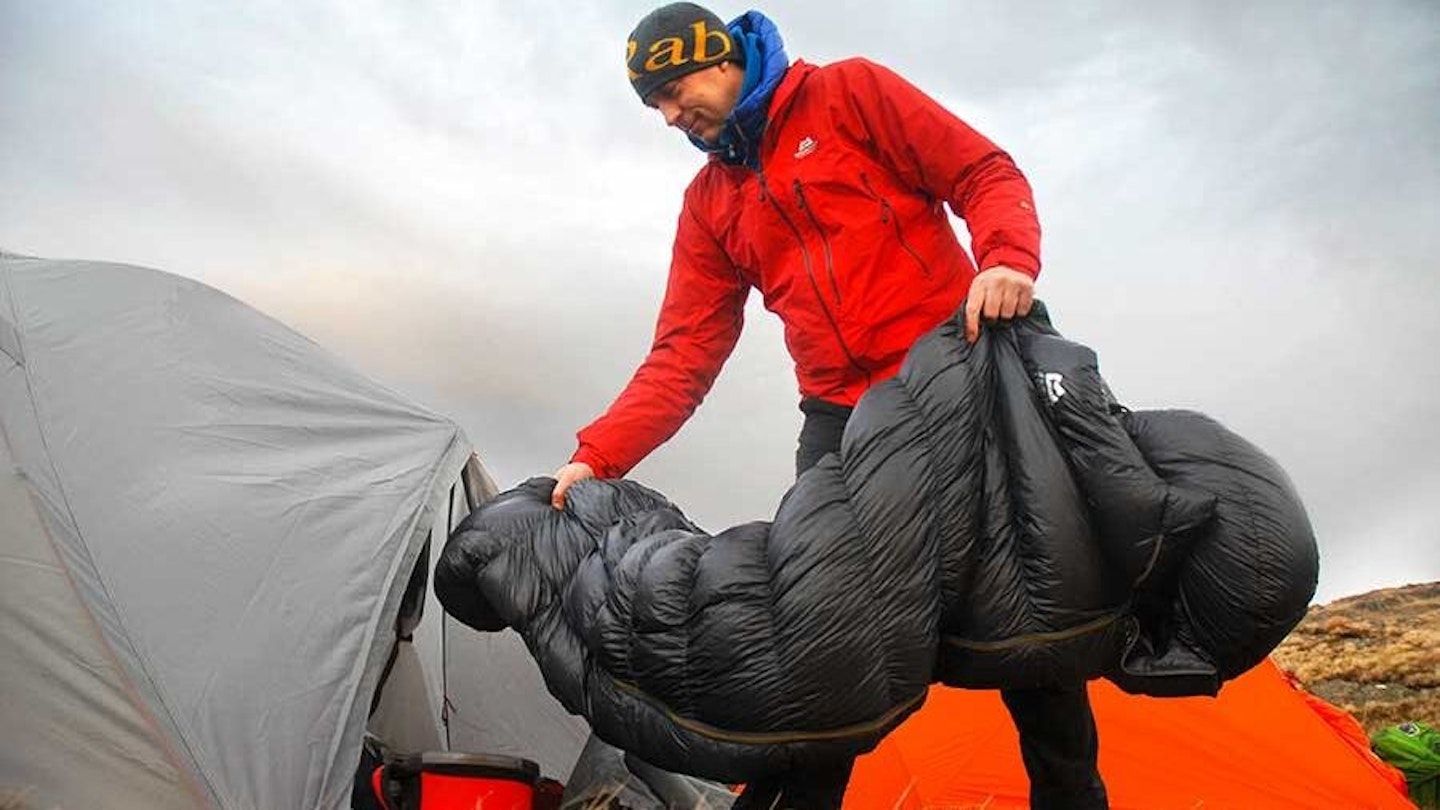
Sustainability
It's vital you take sustainability into account. No one will force you, but it's an important aspect to consider. A sustainable sleeping bag positively affects not only the impact of its production but also the longevity of the sleeping bag and the use you get from it.
Many companies now use recycled insulation (often from post-consumer plastic bottles) for both shell and lining. Some brands have their own down certification schemes – this is something Mountain Equipment does particularly well with its Down Codex.
You can take it a step further by exploring a brand’s broader commitment to sustainability. Brands that provide clear, transparent information and hold third-party certifications – like B Corp, Bluesign, Fair Wear, or Fair Trade – are more likely to prioritise environmental responsibility.
Look out for down sleeping bags with a durable water repellent (DWR) treatment. This helps to extend the life of your sleeping bag by limiting water damage.
Make sure this is PFC-free, as these chemicals tend to remain in soil, water and air for a long period of time. For more info, check out why it's important for kit to be PFC-free here.
Temperature rating
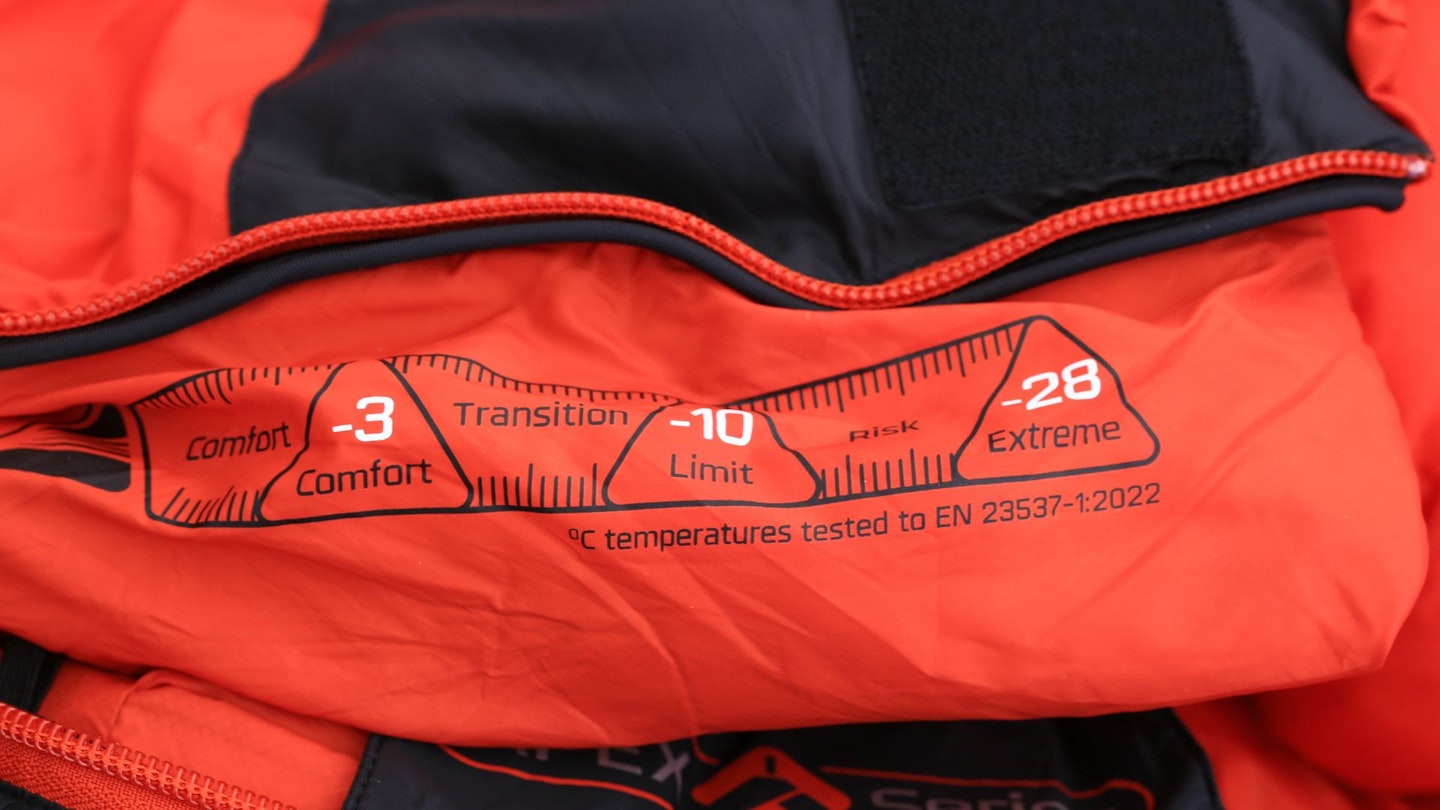
This is a rough guide to the temperature range a sleeping bag is designed for. A sleeping bag normally has three figures in a temperature rating: comfort, limit, and extreme.
Comfort is where the sleeping bag is comfortable for an 'average' adult female; Limit is comfortable for an 'average' adult male; Extreme is a survivable temperature, but you run the risk of hyperthermia. Confusingly, some brands also use their own in-house temperature ratings.
Comfort and lower limits are the most realistic ways to judge a sleeping bag's temperature range, but should be used as a guide only. Some of the best sleeping bag liners will boost the warmth of your sleeping bag. you need to boost the warmth of your sleeping bag.
Insulation type
Down and synthetic fill are the two types of insulation used in sleeping bags. Down is the lofty, fluffy stuff which you find beneath the feathers; it traps air and keeps you warm. The best down sleeping bag have a ratio of down-to-feather ratio of 80/20 or above, but this can go as low as 50/50 for budget bags.
On the other hand, synthetic insulation tends to be bulkier and heavier. This makes it cheaper. Synthetic insulation is damaged less by water, so it's a good option for damp conditions.
Fill power (FP)
This is a rating system for down that measures compressibility and loft, or fluffiness. A higher fill power indicates better quality down and a greater warmth-to-weight ratio. Entry-level down starts at about 650 FP, which is suitable for warm car camping, while high-end is 850 FP+.
Fill weight
The amount of down in a bag is measured by fill weight. Warmer bags have a higher fill weight. Fill weight needs to be looked at alongside fill power, as a sleeping bag with only 650 FP can still be as warm as a bag with 900 FP if it has a higher fill weight.
Weight and packed size
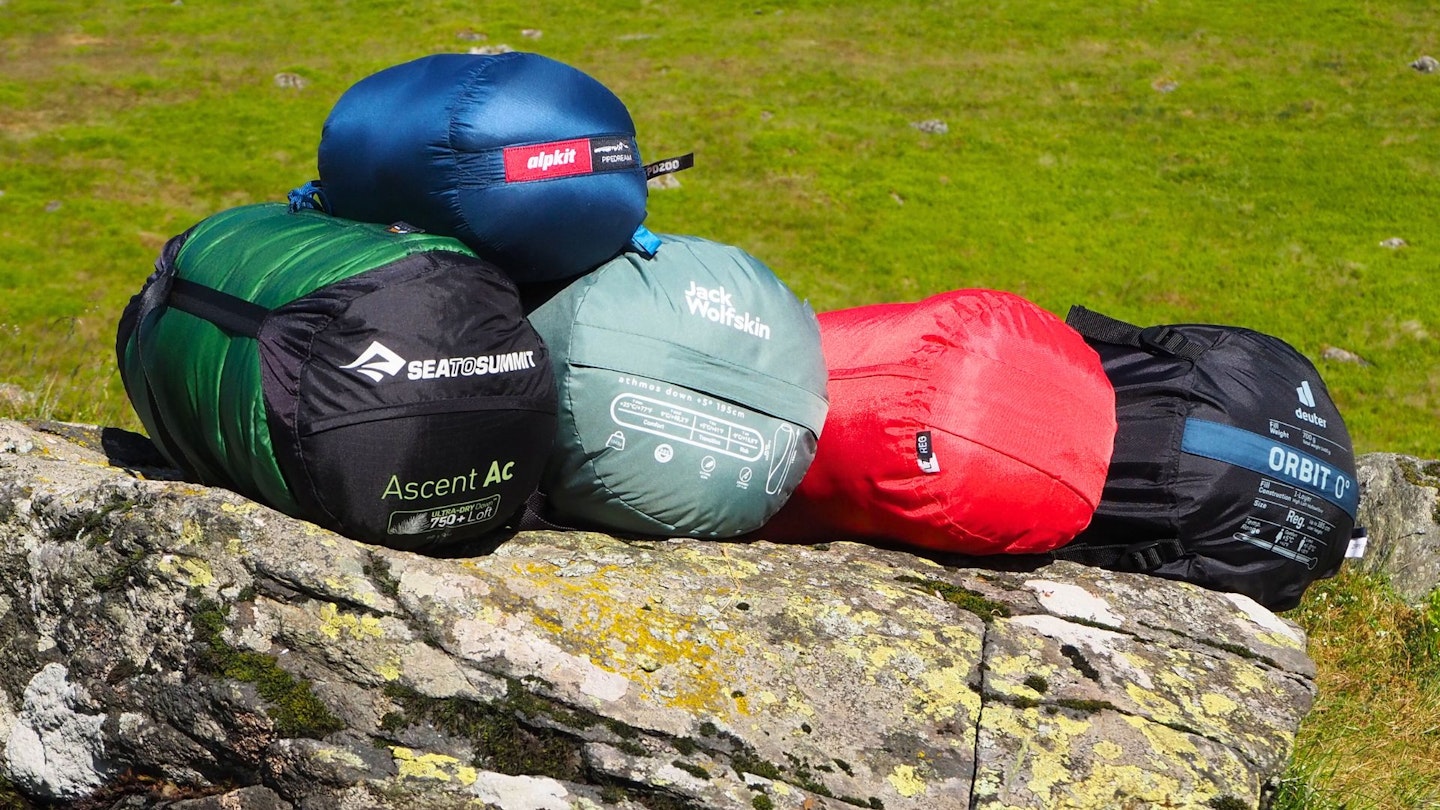
How light and compact a sleeping bag only matters for backpacking and hiking trips where rucksack space is at a premium. For family campsite camping accessed by car, it's not so important. Hikers need to think about a balance of low weight and small size against volume of insulation and warmth.
Down sleeping bags tend to have better warmth-to-weight ratio. If pack size is important to you, look for a bag with a stuff sack that really compresses it.
Material
Nylon is commonly used to make hiking sleeping bags because it's lightweight and strong. Polyester is more common for camping sleeping bags because it's cheaper and a bit softer to touch.
Look at the fabric's denier, and this will give you an indication of material strength. High denier means a denser, tougher fabric; lower denier means lighter but more delicate.
Shape
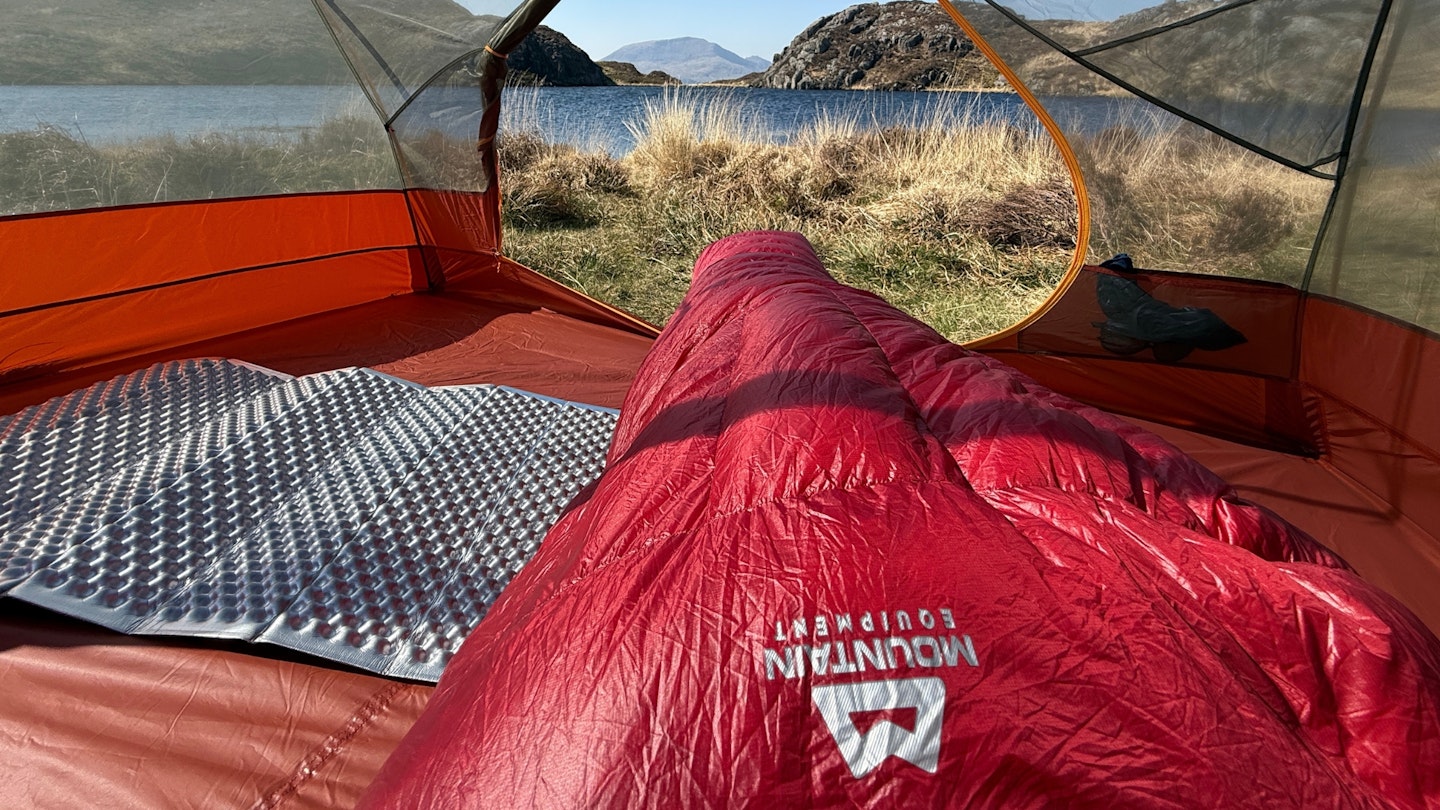
Mummy-shaped sleeping bags are often lighter because of the tapered fit: they're wider at the top than at the bottom. But they can feel restrictive, and you may prefer a more rectangular shape. Semi-rectangular options exist as a middle ground. And don't forget about women's specific sleeping bags that have more insulation around the feet and hips.
Extra features
Zip length is one to consider. Full-length zips make the sleeping bag easy to get in and out of but compromise weight and warmth somewhat. Shorter zips are the converse of this.
Draft tubes and collars boost a sleeping bag's insulating efficiency like they do in your house. If you're opting for a down sleeping bag, also consider whether a hydrophobic down treatment is something you want.
Sleeping bag FAQs
What type of sleeping bag is warmest?
There's a very closely related question to this, which is: 'What sleeping bag shape is the most efficient?' The straightforward answer to both is a mummy-shaped sleeping bag insulated with high loft down. Down offers the best warmth-to-weight ratio for insulating gear and garments. And mummy-shaped sleeping bags have a tapered, more confined fit than a rectangular-shaped sleeping bag and is easier to keep warm. Check out our in-depth guide to sleeping bags for more information.
What is the difference between cheap and expensive sleeping bags?
The key factors that influence price are the type of insulation, sustainability, and whether the sleeping bag is aimed at regular camping or more demanding trekking or hiking. For example, the cheapest type of sleeping bag you'll find is a lightly insulated summer option with synthetic fill aimed at weekend family camping. It doesn't need to be especially light or compact; it probably doesn't have any sustainability credentials to shout about. At the other end of the spectrum, you have the warmest sleeping bags for winter expeditions in the mountains. These use tough fabrics and very high-quality down insulation, both treated to be hydrophobic. If the brand is sustainable, it will have used recycled and PFC-free materials and have high labour standards so that the people who make their gear are paid properly and respected.
About the author
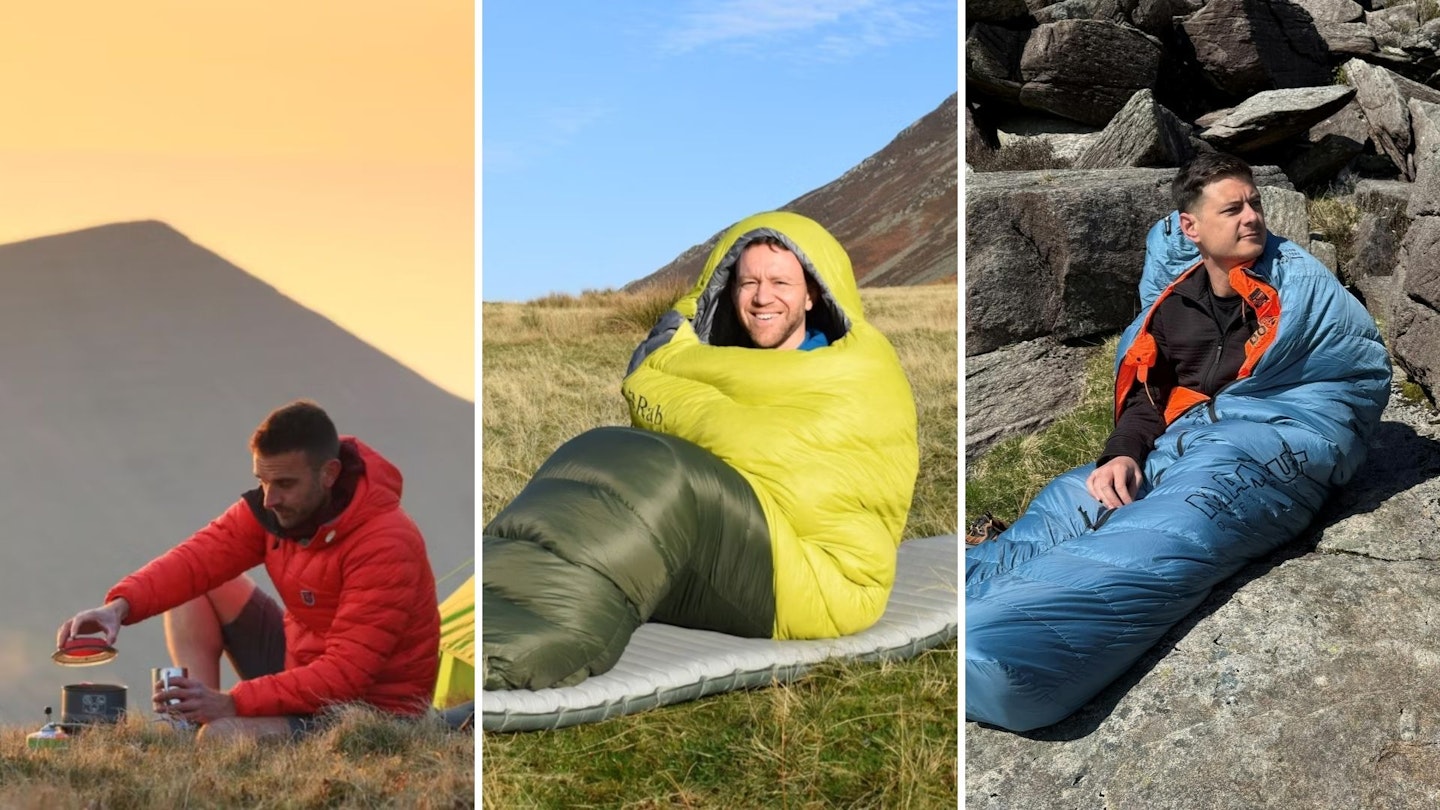
Oli Reed is Group Editor of Live For The Outdoors and Trail magazine. He is a lifelong hiker who has scrambled and climbed hills all over Europe. Meanwhile, James Forrest and Matt Jones are experienced outdoor writers that spend as much time exploring as they do writing (in fact, probably more of the former).



